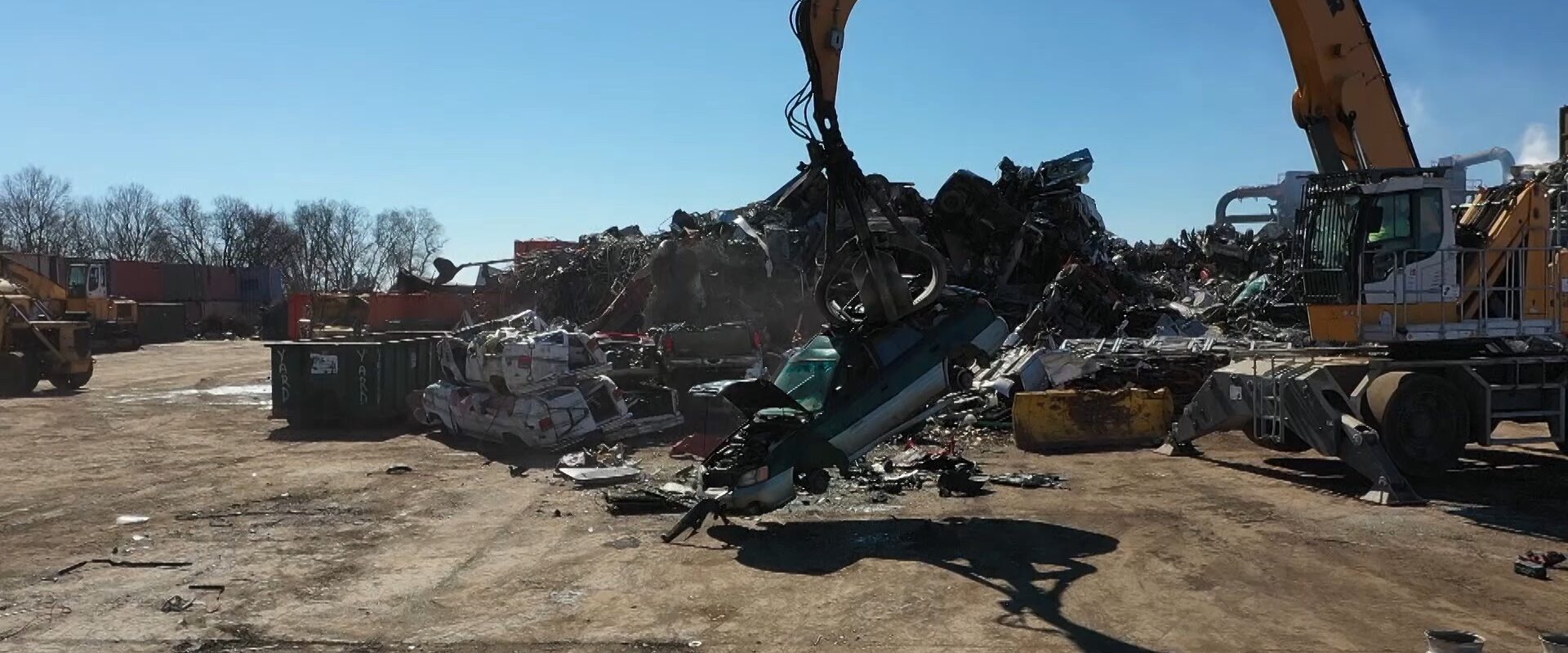Car Crushers
Each year in the US, about 12- to 14 million vehicles reach the end of their useful rolling lives, and about 99-percent of those end up in a scrapyard. But usually, that’s not the end of their story. Stephanie Hart visits a local salvage yard to show us how automobiles are recycled, and the crushing first step to a new ride tomorrow.
STEPHANIE HART: I’m here at ConservIt in Hagerstown, Maryland. 40- to 45-thousand vehicles are shredded each year. Their materials are then used to make entirely new products, which is a win for the environment. Alright, I’m going to put on my safety gear and head out to check out the shredding plant.
Just look at this place! Very cool! Vehicles are actually the most recycled objects in the United States. Globally, 27 million vehicles are recycled each year. 12 million of those vehicles come from the United States. Once plastics are removed, what’s left of the modern automobile are most metals such as iron, aluminum and steel. All can be efficiently recycled!
HOLDEN METZNER: The individual metals are separated using magnets and other technology. So, a car goes in– mixed metals and waste– and it comes out as furnished-ready steel, aluminum, copper, brass. The benefits of recycling automobiles is you’re taking something that has very little value and breaking it down into items that can be reused or recycled.
STEPHANIE HART: Recycled vehicles in the U.S. and Canada provide enough steel to build about 13-million new vehicles. Plus, recycling end of life cars eliminates the need for 85 million barrels of oil that would otherwise be used to make new and replacement car parts.
HOLDEN METZNER: Being able to make new metal from recycled metal saves a ton of energy. It’s much more environmentally friendly from emissions to the energy that’s used to– to melt the aluminum or steel, to the mining that takes place to get the– the raw materials that would be necessary to make new cooper or new aluminum or new– new iron.
STEPHANIE HART: It’s no wonder the car recycling industry is the 16th largest in the U.S., contributing about $25 billion to the national gross domestic product.
HOLDEN METZNER: The steel from automobiles goes to steel mills that make items from rebar, to I beams, to plate, to coil. They can be used to make new cars, appliances… they’re used in buildings, bridges… They can be used to make new equipment.
STEPHANIE HART: Recycling cars is nothing new, it’s been underway since the first vehicles rolled off the production line well over 100 years ago. Its success is built on an entrepreneurial spirit, a love of cars, and a desire to satisfy the needs of an evolving automotive ecosystem.
Cars are more complex these days, so it’s only gotten more challenging for recyclers as far as effectively recovering all of the metals.
HOLDEN METZNER: The technology and the auto-recycling industry has also been improving. It’s allowing us to identify and— and capture, uh, scrap metals that otherwise we weren’t able to, such as insulated copper wire, circuit boards. And also, the sizing of what we’re able to capture. Now, we’re able to capture much, much smaller part sizes versus what we were previously able to do.
NICK REED: So, all the cars that come in– they’re all different, every make and model. Um… So it kind of gives you a challenge to figure out how to process them the best way. Um… that’s probably why I like my job.
STEPHANIE HART: ConservIt employees also feel good, knowing with each car they crush our planet is being preserved for future generations.
SAM METZNER: It’s nice to know that these, uh, items aren’t going to be landfilled or–or disposed of in a way that’s not beneficial for the environment.






